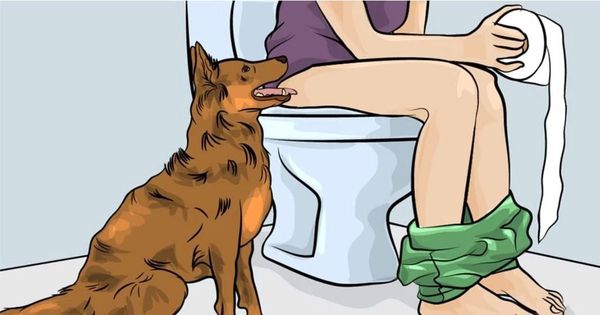The Curious Case of Canines in the Cradle: Why Dogs Follow You Into the Bathroom
Ah, the bathroom. A haven of privacy, a sanctuary of solitude… unless, of course, you own a dog. Then, this most personal of spaces becomes a shared stage in a heartwarming (or slightly unnerving) comedy of canine companionship. But why, oh why, do our furry friends insist on joining us in the most intimate of settings?
Thank you for reading this post, don't forget to subscribe!Separation Anxiety or Pack Mentality?
One of the most common explanations is separation anxiety. Dogs are social creatures, bred to be by our side. For some, even a brief bathroom break can trigger feelings of worry or abandonment. They follow you not to witness your ablutions, but to ensure your safe return. Think of it as a furry security blanket, albeit one with a wet nose and wagging tail.
However, not all bathroom-bound pups are anxious. Some are motivated by a more primal urge: pack mentality. In the wild, wolves and their canine cousins watched over each other’s backs, even during vulnerable activities like elimination. Your bathroom, with its closed door and muffled sounds, might trigger your dog’s instinct to protect you from potential threats. They’re simply being good pack mates, albeit in a slightly misplaced way.
Curiosity: The Engine of Exploration
Let’s face it, dogs are curious creatures. Every rustle, every gurgle, every enigmatic scent emanating from the bathroom is an invitation to investigate. The closed door only amplifies the allure, transforming the mundane into a potential treasure trove of squeaky toys, forgotten treats, or the thrilling novelty of a dripping faucet.
Positive Reinforcement: The Unintended Invitation
Sometimes, we inadvertently train our dogs to follow us into the bathroom. A quick scratch behind the ears while brushing your teeth, a playful tug-of-war with a discarded bath towel – these seemingly harmless interactions can reinforce the behavior, making the bathroom a place associated with positive attention.
So, Should You Banish Your Bathroom Buddy?
The answer, like most things in dog-dom, is nuanced. If your dog’s bathroom obsession is causing no harm and minimal annoyance, consider it a quirk of their canine charm. However, if their presence is causing you distress, it’s time to gently set boundaries.
Here are some tips for creating a bathroom-free zone for your furry friend:
- Provide engaging distractions: Leave a chew toy or Kong filled with treats outside the bathroom door to keep your pup occupied.
- Practice door blocking: Train your dog to stay in a designated area, using a baby gate or other barrier if necessary.
- Reward the desired behavior: When your dog stays put while you’re in the bathroom, shower them with praise and treats upon your return.
Remember, patience and positive reinforcement are key. With a little training and understanding, you can reclaim your bathroom sanctuary, all while strengthening the bond with your four-legged friend.
Beyond the Bathroom Door: Understanding Your Dog’s Needs
Your dog’s bathroom-following behavior might be a window into their overall needs and anxieties. Consider if they are getting enough exercise, mental stimulation, and quality time with you. Addressing these needs can not only create a more well-rounded dog, but also reduce their dependence on being by your side 24/7.
Ultimately, the bathroom door doesn’t have to be a battleground. By understanding the motivations behind your dog’s behavior and implementing gentle training techniques, you can create a harmonious household where privacy and companionship coexist. Who knows, you might even start to appreciate the company, finding comfort in the knowledge that even in the most private of spaces, you’re never truly alone.
Remember, every dog is an individual with unique needs and quirks. What works for one pup might not work for another. Consult with a professional dog trainer or behaviorist if you need help creating a training plan that meets your specific needs.
